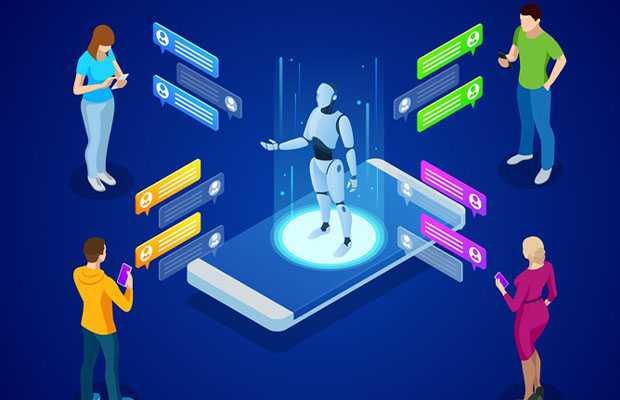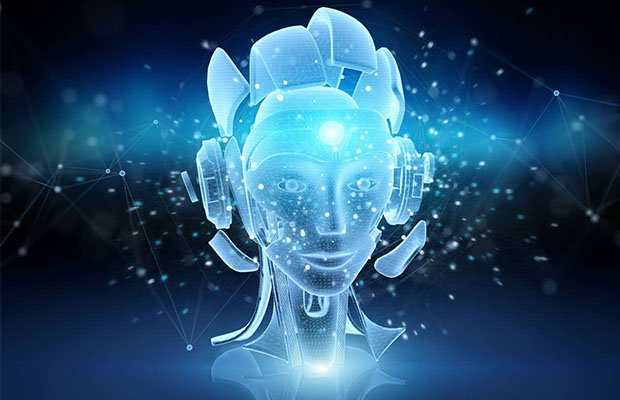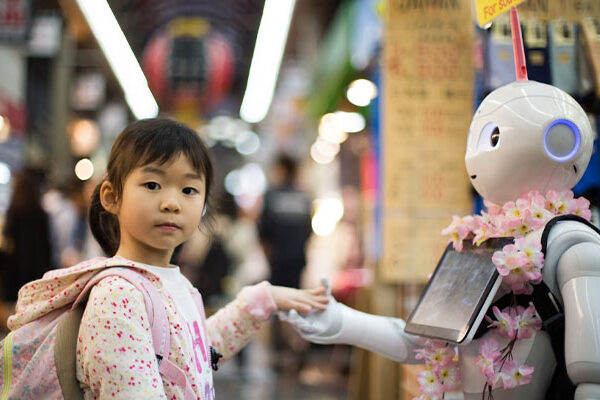The study of logical agents is what is referred to as artificial intelligence. Anything that makes decisions, such as a person, business, machine, or piece of software, can be considered a rational agent. After taking into account both past and present percepts (the agent’s perceptual inputs at a given instance), it executes an action that will produce the best results. An AI system is composed of an agent and its environment. We can better comprehend and put the ideas into practice when we understand how the pieces go together.
The intelligent Agent in AI is what we’re discussing today as a result.
Agent in artificial intelligence is autonomous entities that act upon an environment using sensors and actuators to achieve their goals. In order to accomplish those goals, intelligent agents may also learn from their surroundings. Artificial intelligence (AI) intelligent agents include the virtual personal assistant Siri and driverless cars.
Table of Contents
What Is an Agent in AI?
Okay, did anyone, upon hearing the term “intelligent agent,” immediately picture a well-educated spy with a high IQ? No? Anyway, in the context of the AI field, an “agent” is an independent program or entity that interacts with its environment by perceiving its surroundings via sensors, then acting through actuators or effectors.
The cycle of perception thought, and action is carried out by agents using their actuators. Examples of agents in general terms include:
- Software: This Agent receives sensory input from file contents, keystrokes, and network packages, acts on that input, and then displays the result on a screen.
- Yes, all humans are agents. Humans have hands, legs, mouths, and other body parts that serve as actuators and sensors, respectively. They also have eyes, ears, and other sense organs.
- Robotic: Robotic agents have cameras and infrared range finders that serve as sensors, and a variety of servos and motors that act as actuators.
Intelligent agents in AI are autonomous beings that use sensors and actuators to interact with their environment in order to accomplish their objectives. Intelligent agents may also pick up information from their surroundings to accomplish those objectives. Examples of intelligent agents in AI include Siri, the virtual assistant, and driverless cars.
These are the main four rules all AI agents must adhere to:
- Rule 1: An AI agent needs to have an environmental perception.
- Rule 2: Decisions must be based on observations of the environment.
- Rule 3: Actions should follow decisions.
- Rule 4: The AI agent’s action must be logical. The best possible outcome can be obtained by taking rational action, which maximizes performance.
Read More: CLIPS in Artificial Intelligence
What Constitutes AI Agents?
Agents in Artificial Intelligence contain the following properties:
Environment
The agent is placed in a predetermined environment.
Autonomous
Without direct human input or the use of additional software techniques, the agent can function. It has control over its actions and internal setting. The agent decides for itself what actions to take in its current state to achieve the best improvements. If the performance of the agent is evaluated by its encounters in the context of learning and adapting, then it has achieved autonomy.
Flexibility
- Reactive: Agents need to be aware of their surroundings and respond to internal changes.
- Proactive: Agents should not only react to their environment but also be able to take the initiative when necessary and perform in an opportunistic, goal-directed manner.
- Social: Agents should collaborate with humans or other non-human agents.
Reactive
- Reactive systems continue to interact with their environment and react to changes in it.
- The environment of the program may be guaranteed without concern for its accomplishment or failure.
- Most environments are dynamic, which means that things are always changing and that there is incomplete information available.
- The potential for failure in programs must be considered.
Pro-activeness
taking the initiative to set goals and make an effort to achieve them.
Using Response Rules
Directed behavior, or making the agent act in the user’s best interests, is the agent’s aim.
- Mobility: The agent must be able to move around a system.
- Truthfulness: An agent won’t communicate if the data it provides is false.
- Agents do not have competing or incompatible objectives. Each Agent will thus make an effort to comply with requests.
- Rationality: The agent will act to achieve its objectives rather than in a way that hinders or opposes them.
- Learning: An agent needs to have the capacity to learn.

Types Of Agent In Artificial Intelligence
According to the perceived intelligence and capability of the agents, they can be divided into five classes. Each of these agents has the capacity to develop better performance over time. These are given below:
- Simple Reflex Agent
- Model-based reflex agent
- Goal-based agents
- Utility-based agent
- Learning agent
1. Simple Reflex Agent:
- The simplest agents are those with simple reflexes. These agents make decisions based solely on their current perceptions, disregarding their prior perceptions.
- Only in a fully observable environment do these agents function successfully.
- The decision-making and action-taking processes of the Simple Reflex Agent do not take any factors from perceptual history into account.
- The Condition-action rule under which the Simple Reflex Agent operates allows it to translate the current state into action. It only functions if there is dirt in the room, much like a room cleaner agent.
- Problems with the simple reflex agent design approach:
- They have very limited intelligence
- They do not have knowledge of non-perceptual parts of the current state
- Most of the time, too big to produce and store.
- not able to adapt to environmental changes
2. Model-based Reflex Agent
- The model-based agent can monitor the situation and operate in a partially observable environment.
- A model-based agent has two important factors:
- Model: It is knowledge about “how things happen in the world,” so it is called a Model-based agent.
- Internal State: It is a depiction of the present situation based on the perceptual past.
- These agents have the model, “which is knowledge of the world” and based on the model they perform actions.
- Updating the agent state requires information about:
- How the world evolves
- How the world is impacted by the agent’s actions.
3. Goal-based Agents
- Knowing the environment’s current state is not always enough for an agent to make decisions.
- The agent must be aware of its goal, which describes ideal conditions.
- Goal-based agents expand the capabilities of the model-based agent by having the “goal” information.
- They decide on a course of action in order to accomplish their objective.
- Before determining whether the goal has been accomplished or not, these agents may have to weigh a lengthy list of potential actions. Searching and planning are actions that an agent takes into account when analyzing various scenarios.
4. Utility-based Agents
- These agents are comparable to goal-based agents, but they add a utility measurement component that distinguishes them by supplying a gauge of success at a particular state.
- Utility-based agents make decisions based on both goals and the most effective means of achieving the goals.
- When an agent must decide between several viable options in order to take the best action, the utility-based agent is helpful.
- For the utility function to determine how effectively each action accomplishes the objectives, it maps each state to a real number.
5. Learning Agents
- AI agents with learning capabilities or the ability to learn from their experiences in the past are referred to as learning agents.
- It begins acting with basic knowledge before becoming automatically capable of acting and adapting as it learns.
- A learning agent has mainly four conceptual components, which are:
- Learning element: It is responsible for making improvements by learning from the environment
- Critic: The learning component uses critical feedback to determine how well the agent is performing in relation to a predetermined performance standard.
- Performance element: It is responsible for selecting external action
- Problem generator: This part is in charge of making suggestions for actions that will result in novel and educational experiences. As a result, learning agents are equipped to pick up new skills, assess their performance, and seek out fresh approaches to enhance it.
Functions Of Agent In Artificial Intelligence
Artificial Intelligence agents perform these functions continuously:
- Perceiving dynamic conditions in the environment
- Acting to affect conditions in the environment
- Using reasoning to interpret perceptions
- Problem-solving
- Drawing inferences
- Determining actions and their outcomes
Structure Of Agents In Artificial Intelligence
Agents in Artificial Intelligence follow this simple structural formula:
Architecture + Agent Program = Agent
These are the terms most associated with agent structure:
- Architecture: The equipment or platform used to run the agent.
- Agent Function: The agent function maps a precept to the Action, represented by the following formula: f:P* – A
- Agent Function: The agent function is carried out by the agent program. By running on the physical architecture, the agent program generates a function.
The PEAS model is a common structural element in AI agents. Performance Measure, Environment, Actuators, and Sensors are all letters that make up the acronym PEAS. Take a vacuum cleaner, as an illustration.
- Performance: Cleanliness and efficiency
- Environment: Rug, hardwood floor, living room
- Actuator: Brushes, wheels, vacuum bag
- Sensors: Dirt detection sensor, bump sensor
Examples Of Agent In Artificial Intelligence
- A software agent has Keystrokes, file contents, network packets that have been received and are acting as sensors or display elements on screens, and packets that have been sent and are acting as actuators.
- The hands, legs, mouth, and other body parts of a human-like agent serve as actuators and serve as sensors, respectively.
- A Robotic agent has use various motors as actuators and cameras and infrared range finders as sensors.
How To Improve The Performance Of AI Agents?
When tackling the issue of how to improve intelligent Agent performances, all we need to do is ask ourselves, “How can we increase how well we perform a task?” Of course, the solution is straightforward. We carry out the task, remember the outcomes, and make adjustments in light of our memories of prior tries.
The same is true of AI agents. By saving its prior attempts and states, the Agent improves and learns how to react more effectively in the future. The intersection of artificial intelligence and machine learning is here.




